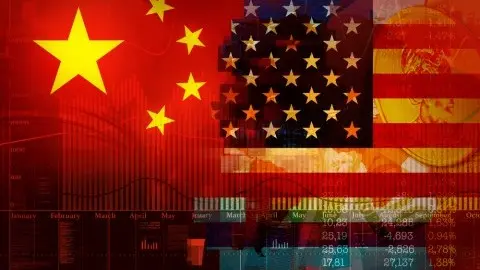Brazil: The presidential race narrows
The likely outcome of the presidential election has narrowed considerably, but Brazil’s post-election economic policy outlook remains highly uncertain. Still, we believe that the BRL’s outlook has improved with the falling risk of a Ciro Gomes victory and signs that Fernando Haddad, if elected, would pivot to a more pro-market rhetoric.
Is it already a two-horse race?
The latest polls confirmed that the presidential election race has been substantially polarised over the past week, with PT/anti-PT sentiment contributing to exacerbate voter support towards these polar opposites, and draining support from the middle.
As a result, voter support to (right-leaning) Jair Bolsonaro has been rising towards 30% while support to (left-leaning) Fernando Haddad, the newly-anointed successor to Lula, is quickly rising towards 20%, increasing the gap from the remaining candidates. If this trend persists over the coming week, we should be able to eliminate our previous assumption that the first-round race will be hard to call until very close to the October 7 election.
In fact, it’s almost as if the first-round ballot has become a test-run for a runoff (October 28) between Bolsonaro and Haddad, with both sides now aiming for a first-round victory sizeable enough (ie, larger than 50% of the valid votes) to eliminate the need for a runoff. A first-round victory remains unlikely, but it is no longer as far-fetched as it seemed just one week ago.
For now, third-runner Ciro Gomes has survived the Haddad tsunami surprisingly well, becoming a possible third-way alternative to the PT/anti-PT narrative. His main competitor is Haddad however, and a bitter fight in the Northeast, where both compete for primacy, could end up helping Bolsonaro, if Gomes’s supporters fail to support Haddad in an eventual second round, assuming that Haddad’s rise is sustained.
Bolsonaro is generally considered to be a second-best option for investors, after market-favourite Geraldo Alckmin. With Alckmin's chances dropping sharply, investors are now primarily focused on assessing who would prevail in a Bolsonaro vs. Haddad runoff. Second-round simulations suggest that this is going to be a tight and polarised race, still very difficult to call.
Popular demand for “something new” gives Bolsonaro an edge
A key concern is Bolsonaro’s high rejection rate, the highest among all the candidates, which makes him a relatively weak contender in runoff simulations. And his difficulties could increase if the candidate fails to make a full recovery relatively soon, which could increase the chances of a left-leaning victory in the October 28 runoff.
Lula also remains a formidable force, propelling Haddad forward, but the impressive enthusiasm demonstrated by Bolsonaro’s supporters, if social media is any indication, with important grass-roots elements, suggests that he may ultimately have an edge over Haddad. The surge in that enthusiasm is due to both the rise in anti-PT sentiment, as Haddad has risen in the polls, and the persistent anti-establishment sentiment, which has been attached to Bolsonaro’s candidacy from the start.
The latter (ie, the anti-establishment sentiment) is what should give Bolsonaro an edge, in our opinion. With Lula and his proxies winning every presidential race since 2002, popular support for “something new” is likely to prevail.
What does this mean for the BRL?
Near-term prospects for the BRL should follow investor assessment of the likelihood of victory by Bolsonaro (seen as BRL-positive) or Haddad (seen as BRL-negative). This suggests that the currency should remain choppy, especially if upcoming polls show improved odds for Haddad in second-round simulations, which seems likely given the fresh momentum in Haddad’s candidacy.
Near-term outlook for local assets has improved, but 2019 should be another choppy year
However, we are of the view that the BRL’s overall outlook has improved. This reflects two factors: 1) the risk of a Ciro Gomes victory has dropped considerably, and 2) there are now initial signs that Haddad, if elected, would immediately pivot to calm down investors, with a more pro-market rhetoric, similar to Lula’s strategy in 2002. As a result, we suspect that the BRL weakness may be limited to the current range, with a much-reduced risk of a sustained surge above 4.2.
Moreover, apart from the more limited downside for local assets, we suspect that a rally right-before or right-after the elections is much more likely now. This would reflect either a high likelihood of a Bolsonaro victory or clear signs that Haddad will pursue a fiscally responsible economic agenda, for instance by appointing a well-known and respected Finance Minister.
Given current market technicals, with anecdotal evidence suggesting of a large prevalence of short-BRL positions and/or bearish positions in local markets, which increased over the past month as much of the bullish positioning got stopped-out, we suspect that the rally in local assets could be significant. The depth of the rally would also reflect the fact that, at current levels, local asset prices may be considered quite attractive, if one assumes that the fiscal challenges will be properly addressed.
Having said that, we suspect that any local asset rally, including for the BRL, could be relatively short-lived, and characterised as opportunistic in nature. This is because we remain highly concerned about the ability of any new administration to approve the urgent fiscal consolidation initiatives needed to re-anchor Brazil’s fiscal accounts. As a result, 2019 could turn out to be another choppy year for local assets, with volatility largely driven by prospects/approval of fiscal austerity initiatives in Congress.
We no longer expect the central bank to increase the SELIC rate this year
In any case, given our new assessment for the BRL trajectory in the nearer-term, we no longer expect the central bank to increase the SELIC rate this year. In yesterday’s monetary policy meeting, authorities kept the policy rate on hold at 6.5% but altered the guidance from neutral to hawkish, as expected. They also clearly indicated that they are open to consider a “gradual” policy tightening program. But a rate hike remains strictly conditioned on further deterioration of the inflation outlook, which would happen, for instance, if the BRL weakens further due to the political/fiscal uncertainties.
In our opinion, if inflation dynamics remain contained, inflation expectations remain anchored, economic activity remains subdued, growing far below potential and with abundant slack in labor markets, and the BRL follows a stronger trajectory, the central bank is likely to continue to delay the policy tightening.
The chief risk to our monetary policy call would be fresh deterioration in BRL trends, in response to domestic or external drivers, or higher-than-expected inflation prints. Overall, however, we suspect that the threshold for hikes is higher than the probabilities implied in the local yield curve, which is now pricing 100bp in rate hikes during 4Q. Given the substantial ammunition to intervene in the FX market, if necessary, authorities will likely prefer to wait until a clear assessment of the fiscal outlook is possible. Fiscal policy remains the most crucial ingredient in the assessment of next-year’s monetary policy path.
This publication has been prepared by ING solely for information purposes irrespective of a particular user's means, financial situation or investment objectives. The information does not constitute investment recommendation, and nor is it investment, legal or tax advice or an offer or solicitation to purchase or sell any financial instrument. Read more
Download
Download article
20 September 2018
In case you missed It: Trade tensions mount This bundle contains 7 Articles